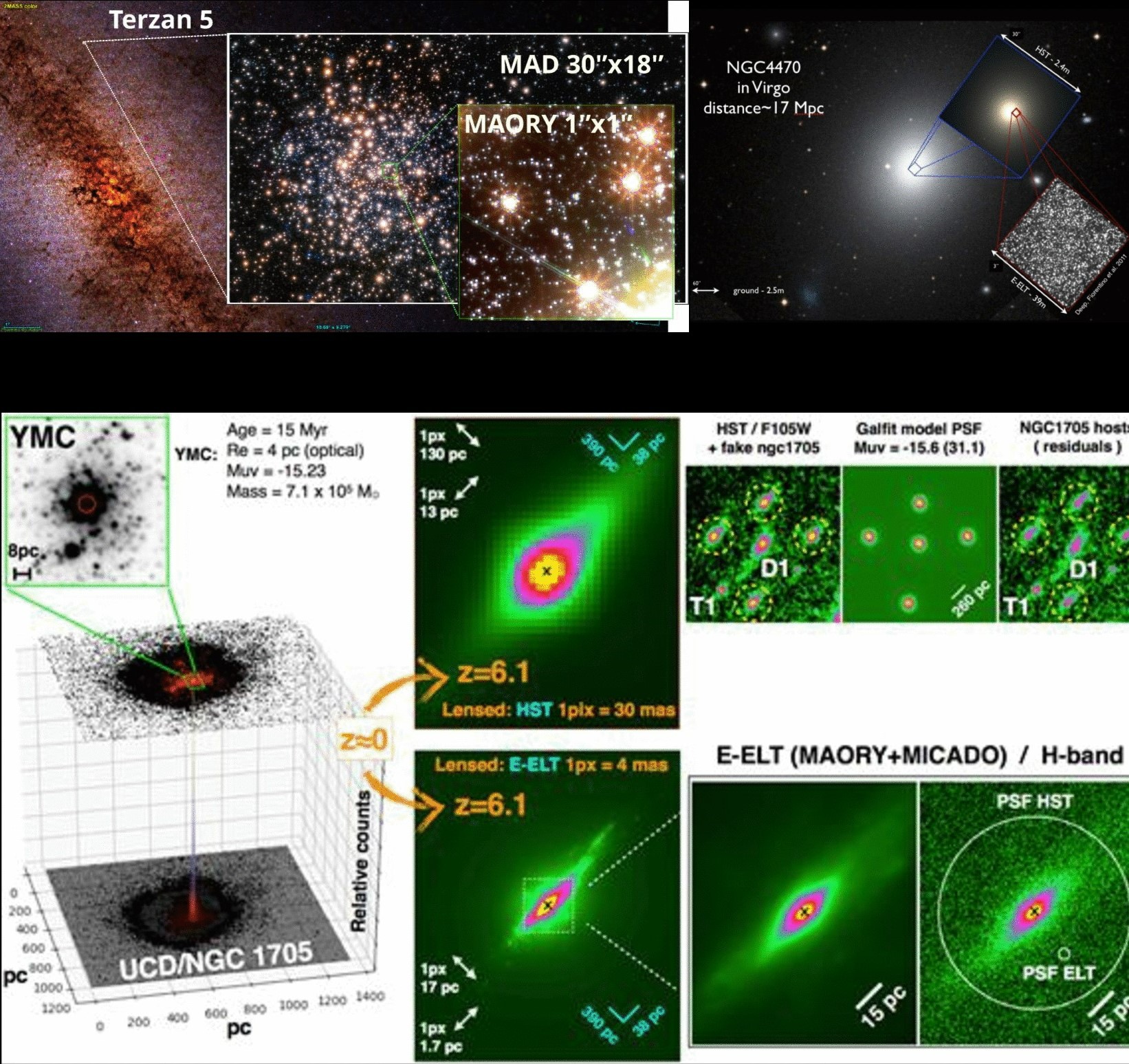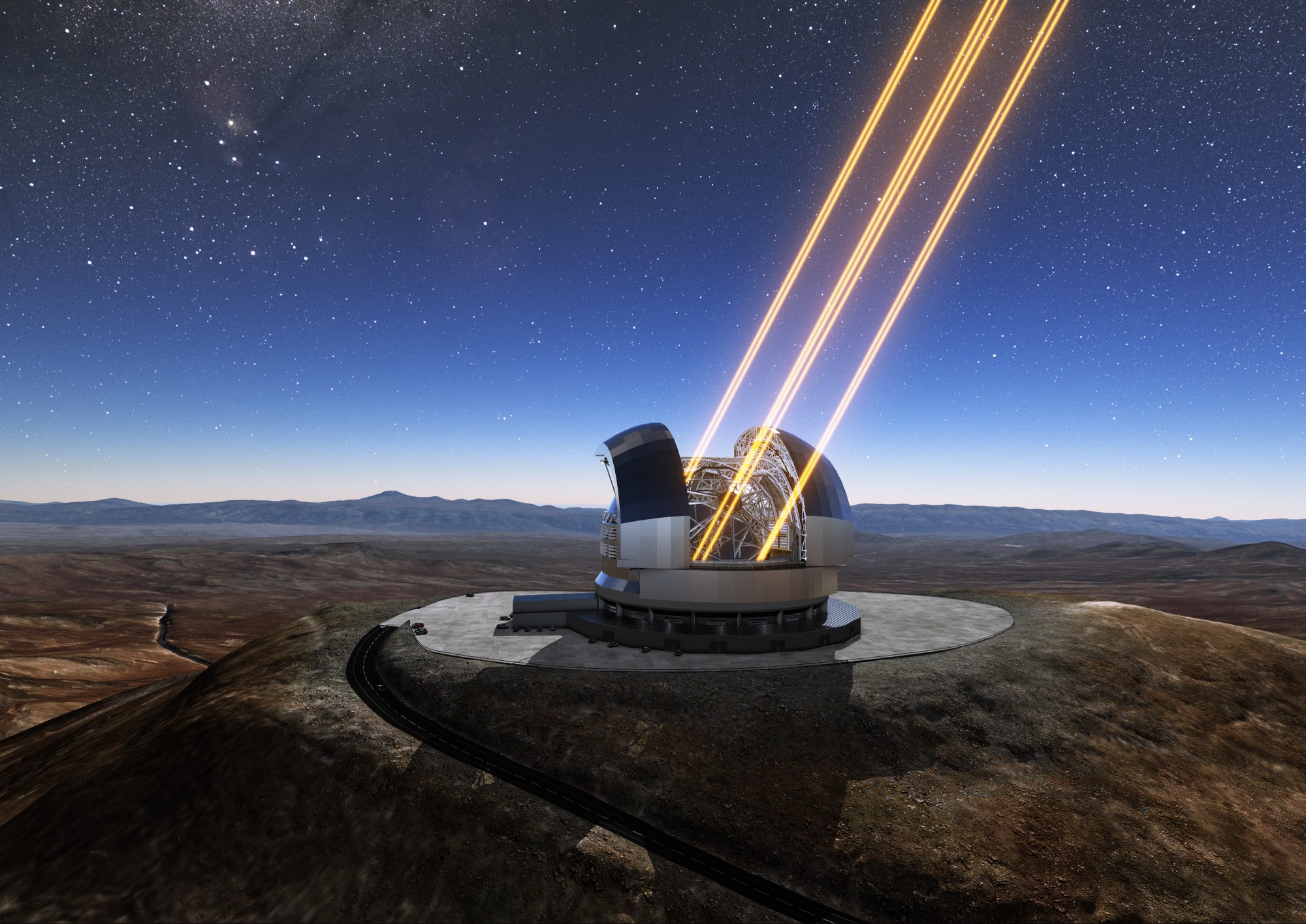Coupled with MICADO, MORFEO will enable ELT to perform diffraction limited near infrared observations. In imaging mode MAORY+MICADO will provide an option with a wide FoV (50.5 x 50.5 arcsec2) at pixel scale of 4 mas and a high resolution option with 1.5 mas pixel scale over 19×19 arcsec2. This will allow a major step forward, with a significant increase in spatial resolution with respect to HST and even JWST (pixel scale ~ 30mas/pix). Long slit spectroscopy will be covered with two settings: a short slit 0.84-1.48 μm, and a long slit from 1.48-2.46 μm.
The science cases for the MORFEO/MAORY+MICADO have been widely explored by the MAORY science team. A preliminary collection of the cases studied is reported in the MORFEO/MAORY science cases white book
The collected science cases address many of the major questions of astrophysics :
- Planetary systems including cases in our own Solar Systems , exoplanet and formation of planetary system
- Nearby stellar systems with stars and stellar systems within our own Galaxy and its satellite
- Local Universe with science cases aimed to study the stellar content and the structure of distant stellar systems that can be at least partially resolved into individual stars. In many cases they will fall within the range of resolved systems only thanks to the advent of MORFEO+MICADO
- High-redshift Universe with the science cases addressing the formation of structures and cosmology using the formidable sensitivity and resolution of MORFEO+MICADO to probe the very distant Universe and, consequently, the earliest phases of galaxy formation, as well as high energy phenomena over the range of cosmic distance and times made accessible by ELT.


